- column
Key Points in Batter Making:How to Measure Specific Gravity
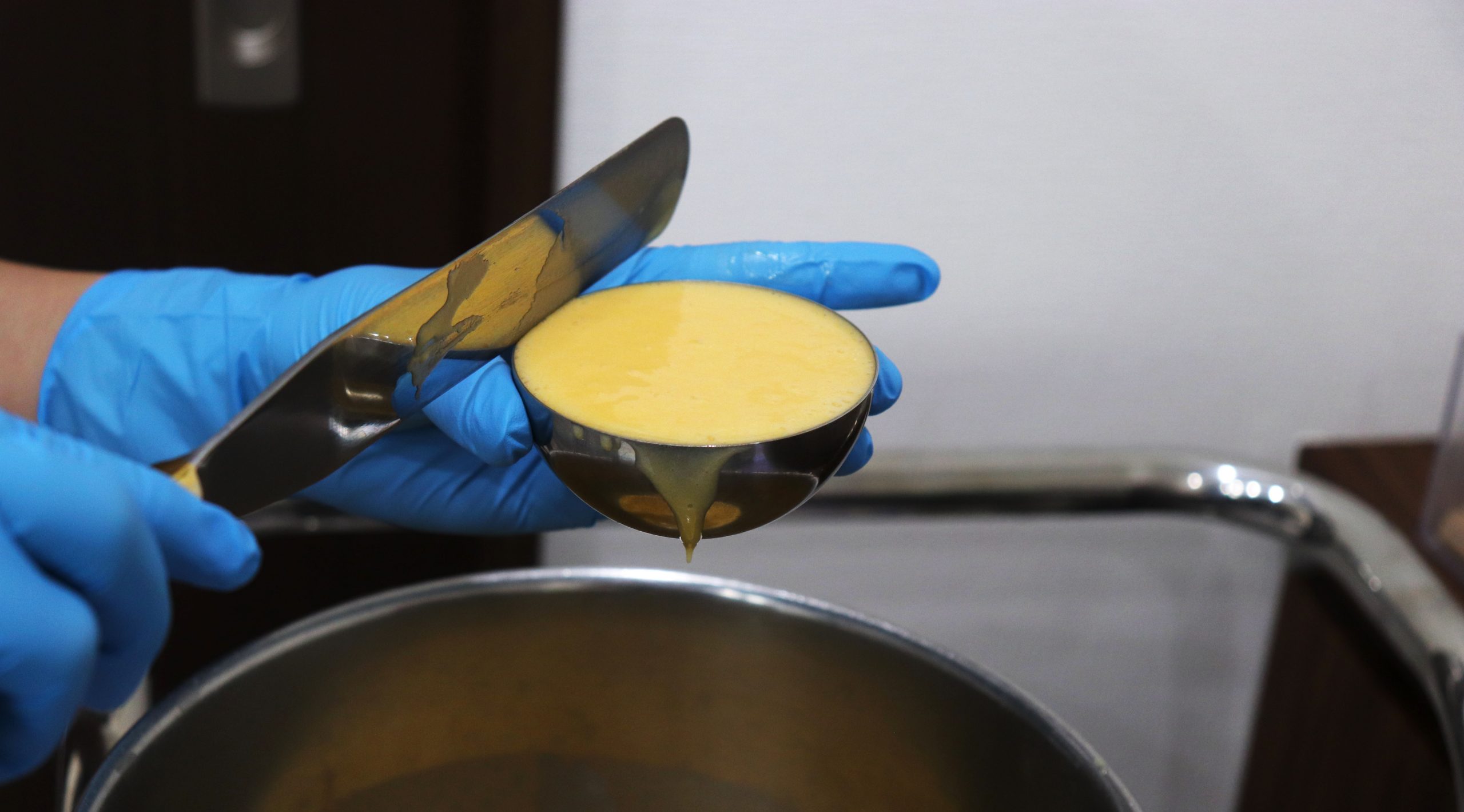
Key Points in Batter Making:How to Measure Specific Gravity
We previously examined specific gravity during our waffle-making session, but what exactly does it signify? What is the essence of specific gravity in the first place?
This article delves into the importance of specific gravity, highlighting its pivotal role as one of the key factors in batter making.
Introduction
When aiming for uniformity in your product, regardless of who is crafting it, several factors come into play. In the world of batter, variables such as temperature, specific gravity, and viscosity play pivotal roles in shaping the end product including the finish, texture, and size.
Specific gravity, in particular, serves as a crucial parameter, revealing the quantity of air bubbles present in the batter (though it’s less pertinent for dorayaki, which does not undergo whisking).
For creations that aim for a light and fluffy texture, such as soufflé pancakes, waffles, and similar treats, specific gravity takes on significant importance.
What is Specific Gravity?
Specific gravity is defined as “the ratio of the weight of a batter in a container compared to the weight of water in the same container.”
Different batters and combinations have distinct optimal specific gravity values, and gauging this specific gravity simplifies the assessment of batter conditions.
When using a 100ml container, the specific gravity is calculated by dividing the weight of the batter (excluding the container weight) by 100.
How to Measure Specific Gravity
- Place a 100 ml cup on a scale and reset the scale to 0 g.
- Without changing the scale setting, use a palette knife or a similar tool to carefully transfer the batter into the cup in small increments.
Take precautions to fill the cup completely without leaving any voids. - Once the cup is filled with the batter, return it to the scale and measure the weight. This weight divided by 100 represents the specific gravity of the batter.
* The container does not necessarily have to be precisely 100 ml for calculating specific gravity.
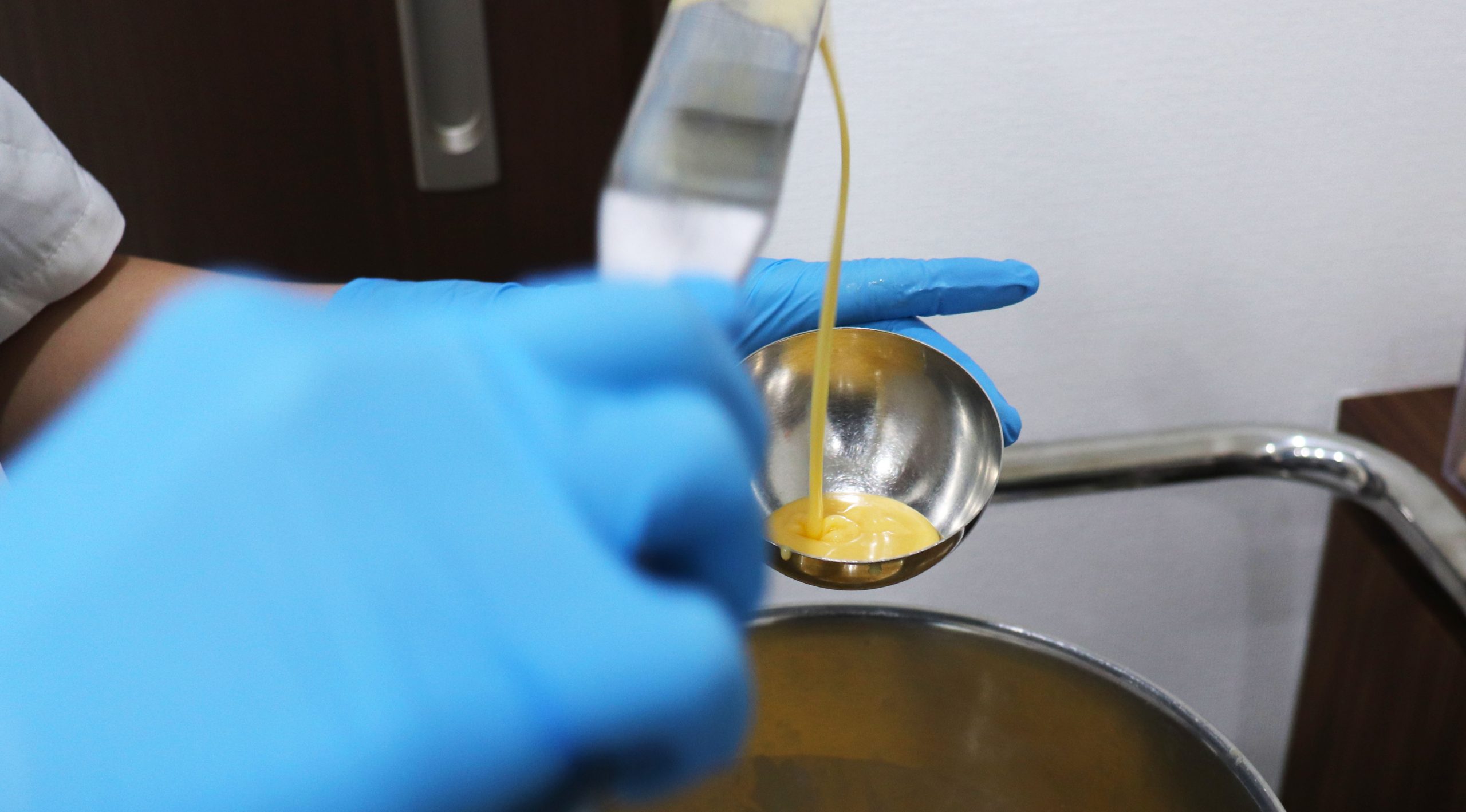
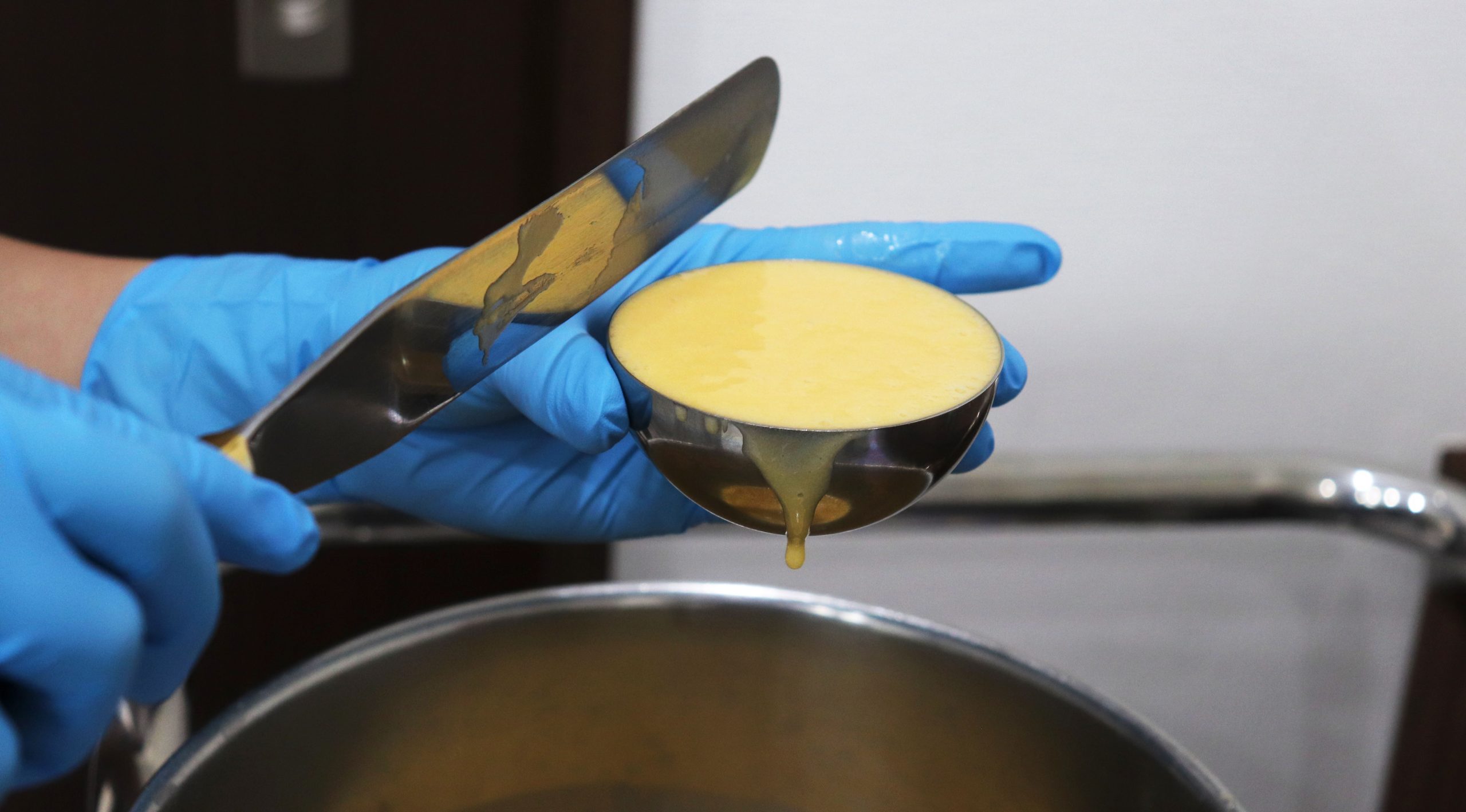
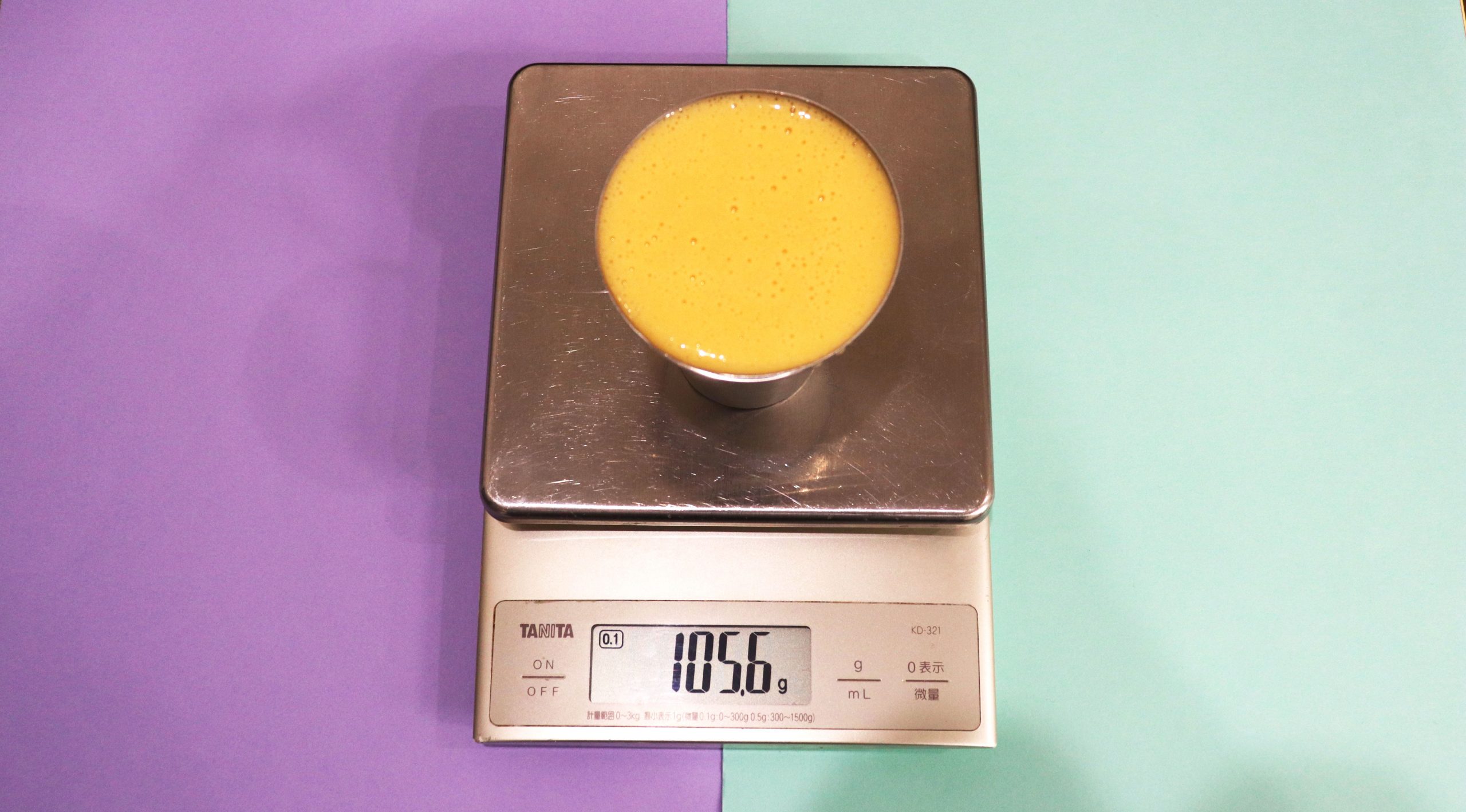
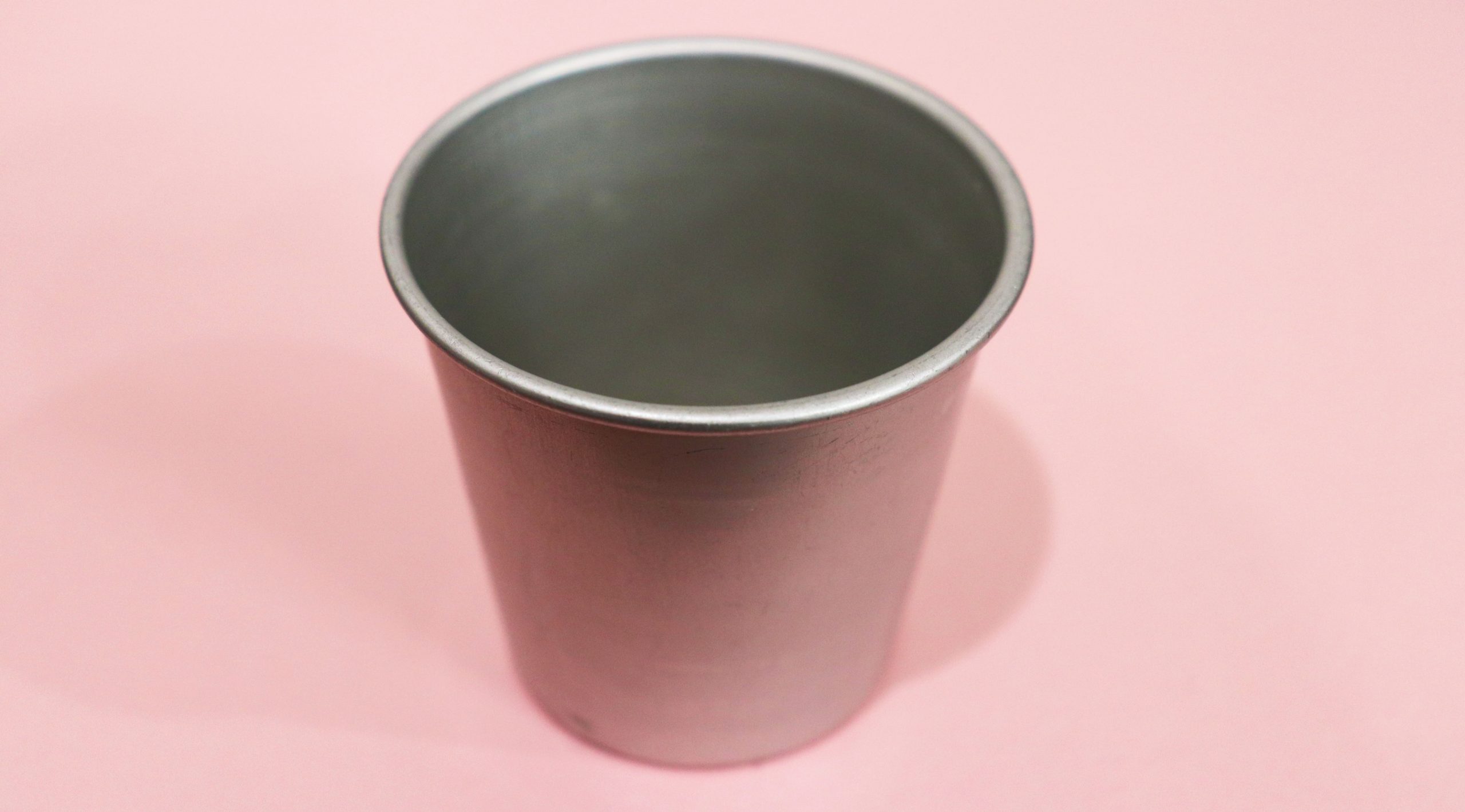
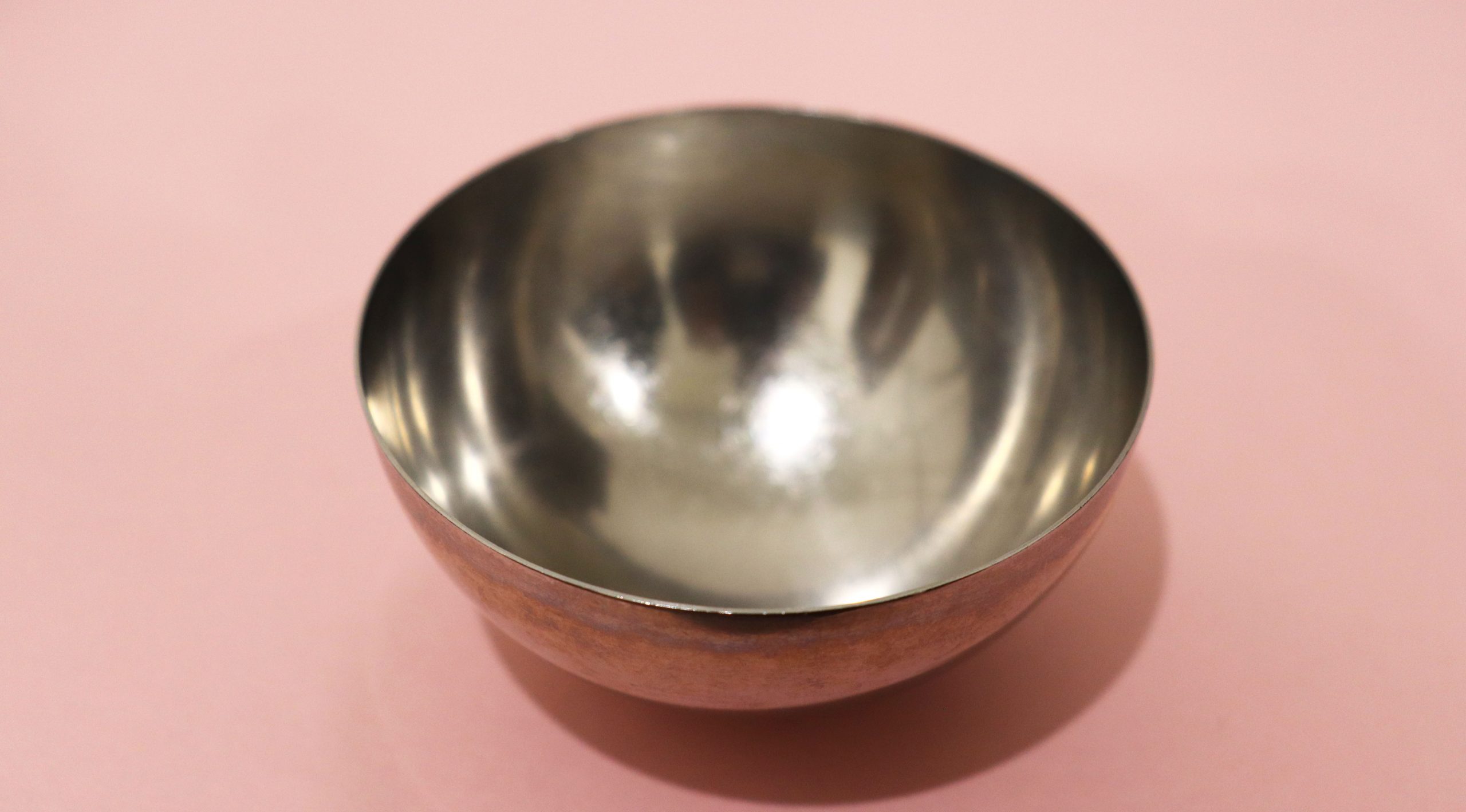
All-in-one Method and Egg Separation Method
In our previous article, we shared a waffle recipe employing the all-in-one method, which you can find here
https://www.masdac.co.jp/media/archive/detail05/
The all-in-one method involves whisking whole eggs to create a batter that’s enriched with air bubbles. This technique yields a smooth, flowing finish, with fine and well-connected bubbles that contribute to a batter’s excellent elasticity.
Warming the batter to 35-40℃ facilitates the emulsification of the egg yolks, making the rise easier.
In contrast, the egg separation method involves isolating egg yolks and whites. Here, the air bubbles from the meringue made with egg whites are utilized to expand the batter.
The meringue, with more air bubbles than whole eggs, results in a sturdier batter. However, the larger air bubbles can render the batter less cohesive, leading to a more brittle texture.
When whipping egg whites, a quick, short-time approach may produce coarse, fragile bubbles. Optimal results involve whipping for approximately 10 minutes, yielding fine, smooth, and unbreakable bubbles.
While emulsifiers are occasionally added as foaming aids, their use requires caution.
Rapid whisking might cause the specific gravity to lighten before thorough mixing, so it’s advisable to take time to achieve a well-mixed batter.
It’s fascinating how adjusting the specific gravity contributes to a consistently uniform result.
It feels like we have unveiled a secret to successful pastry making.
In this article, we explored one of the crucial aspects of batter preparation—specific gravity. Stay tuned for our next article, where we will delve into the topic of eggs.
